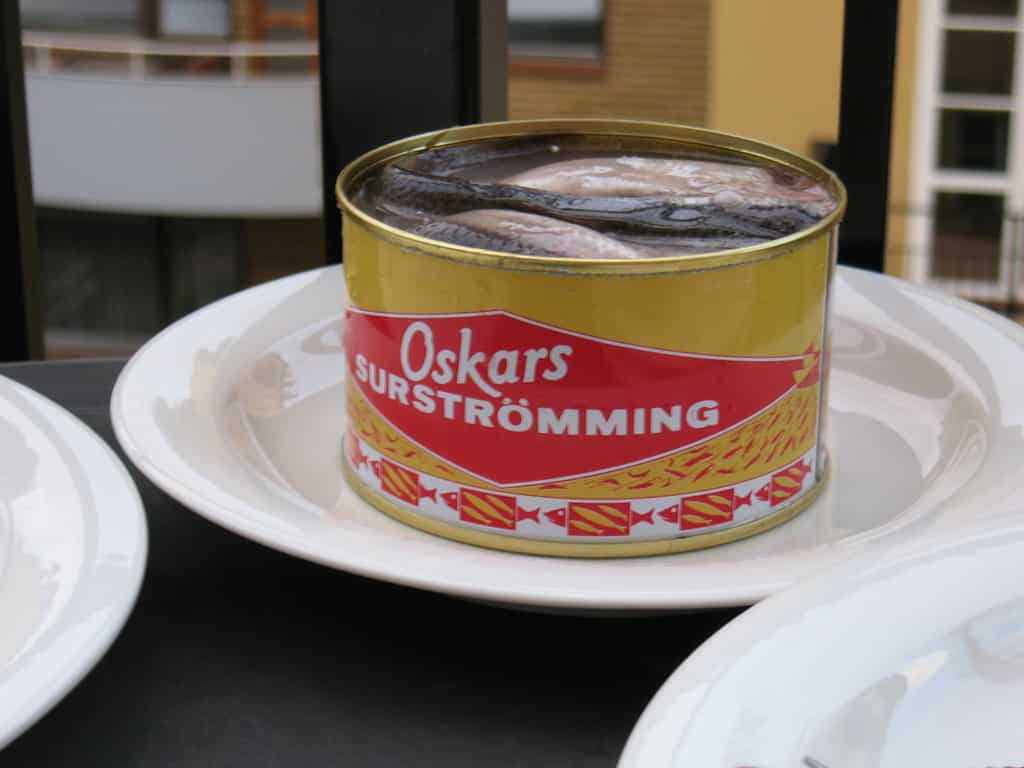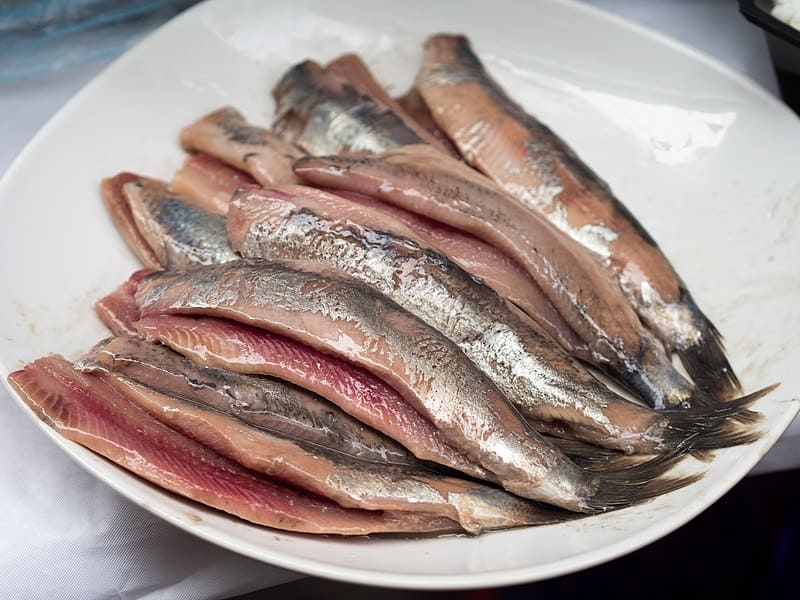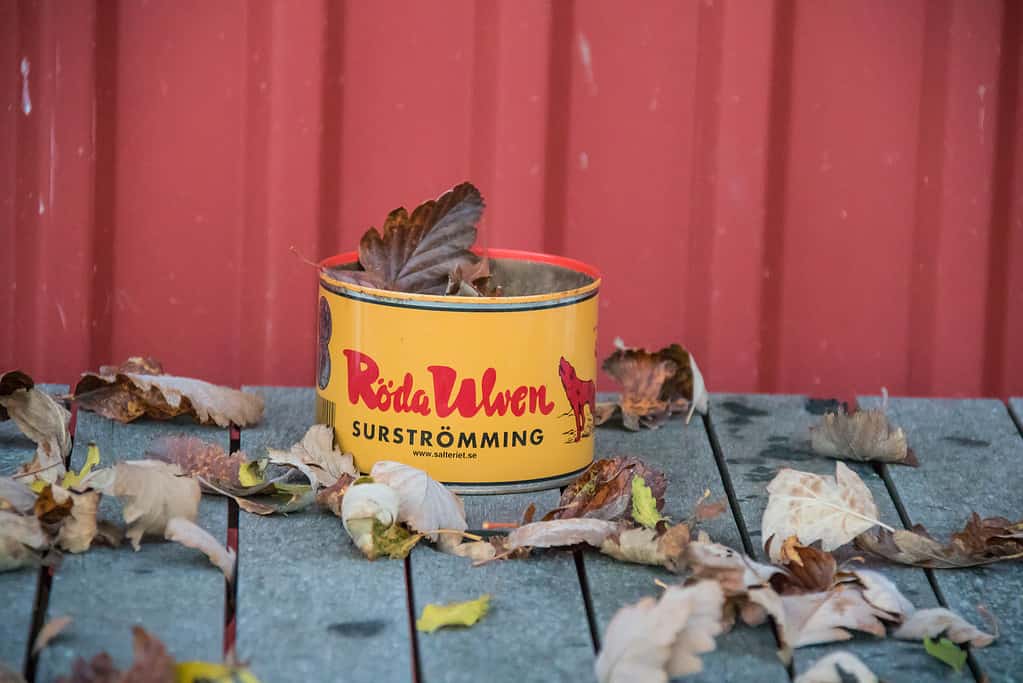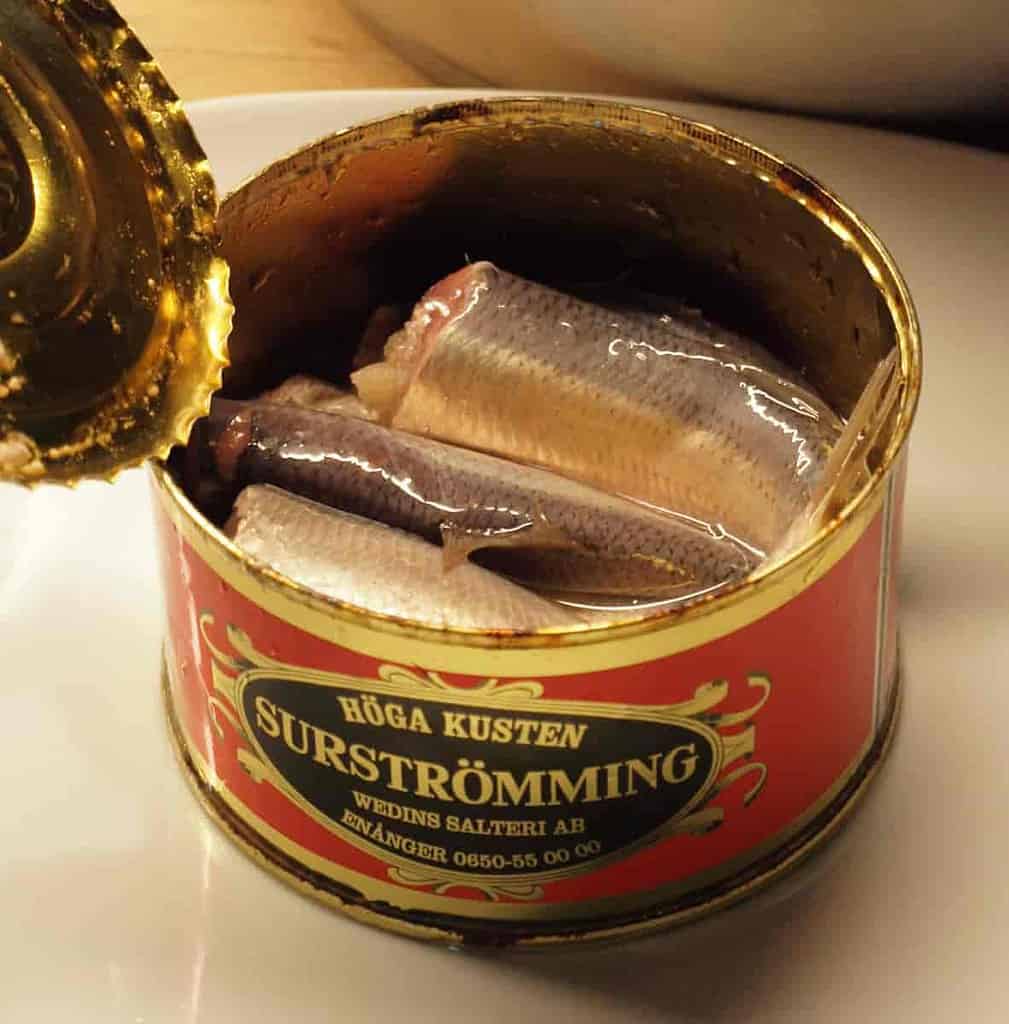
When it comes to gastronomic oddities, few can match the infamy of Surströmming, a traditional Swedish dish made by fermenting Baltic herring. This dish is so pungent that airlines have banned it and deemed it a security risk, and it’s often considered the smelliest food in the world.
However, despite its notorious reputation, Surströmming continues to be a cherished delicacy in some parts of Sweden. So, what exactly is Surströmming, and how did it come to be such a polarizing dish?
What is surströmming?
Surströmming is a traditional Swedish dish made from fermented Baltic herring, a small fish species found in the brackish waters of the northern Baltic Sea. The Baltic herring has a specific name in many local languages, and Swedish is no exception: it’s called strömming by the Swedes, so you can start to see how this dish got its name.
The tradition of fermenting fish in Sweden dates back centuries, with evidence of similar practices found in Viking settlements. Historically, fermenting fish was a way of preserving the catch for long periods, particularly during the winter months when fishing was difficult.
However, based on existing evidence, the Vikings did not produce surströmming. They relied on other dried and pickled fish, like lutefisk, which is dried whitefish (normally cod, but ling and burbot) or hákarl, the fermented shark that is Iceland’s national dish. Surströmming is fermented herring and is distinct from fried or pickled herring.
How is surströmming made?
To make surströmming, you first need to catch some herrings. Fishermen typically catch herrings before they spawn, in April or May, until they start to fatten. The fermentation process can be pretty grueling. First, the fish are put into a strong brine for just under a day — a process that removes all the blood. Then, they behead and gut the fish and put them into a different brine solution.
This secondary brine has to be just right. It needs to have enough salt to prevent the fish from rotting, but not too much so that it can ferment. The fish in the brine are placed in barrels kept at controlled temperatures, around 15–20 °C (59–68 °F). After that, they are canned.
During this time, the fish undergoes a process of lacto-fermentation. This is a process in which natural bacteria in the fish break down the proteins and produce lactic acid, which gives the fish its characteristic sour and pungent aroma. The fermentation continues over the entire process, enabling bacteria to break down and change the chemistry of the fish. This produces surströmming’s strong, pungent odor, which has been described as a mix of rotten eggs, ammonia, and rancid butter.

The fermentation process also leads to a change in the fish’s texture, making it softer and more gelatinous. Then, the canning process seals in the aroma and flavor and creates a dish that is both loved and feared by many.
Researchers are still studying the chemistry of Surströmming, trying to isolate the microbes involved. For instance, one study found that some of the microbes involved don’t even need oxygen to breathe (they’re anaerobic), and these anaerobes “may contribute to the intense flavor and the swollen can characteristics of Swedish fermented herring”. Another concerning study found that Surströmming may contain drug-resistant bacteria, possibly from the fish.
The history of Swedish fermented fish
As mentioned, preserving fish is not a new practice. It’s been done since at least the Bronze Age, and possibly way before that. In fact, cod trade is one of the oldest trades in the world, and the Vikings were trading dried cod over a thousand years ago. Surströmming, however, is believed to have been developed in the early 16th century by fishermen in the coastal town of Skellefteå.
In those times, fish was a staple food for the coastal communities, and fermenting it was a way to preserve it for longer periods. Over time, the tradition evolved and spread throughout the country, becoming especially popular in the northern regions and rural regions, where the cold climate made it difficult to grow crops. Surströmming, in particular, became a favorite among fishermen and farmers, who relied on it as a source of protein during the long winters.
Nowadays, the dish has become a sort of marker for rural identity, an almost political marker.
“Ingesting it expresses the cultural values of simplicity, egalitarianism, the natural, belonging and community and a rural counterculture. This is done in direct opposition to the urban of Stockholm’s inhabitants. The result is that taste and commensality is construed as a political event,” writes Mathias Ephraim Nygaard, an associate professor of Religious Studies at the Newman Institute in Uppsala, Sweden.
Today, surströmming is still sold and consumed in all parts of Sweden, where it is often served with potatoes, onion, and strong cheese.

The process of making surströmming has remained largely unchanged over the years, with many families passing down their own recipes from generation to generation. However, the dish’s popularity has waned in recent years, as younger generations have turned to more modern forms of cuisine. Some have even called for surströmming to be banned, citing the offensive smell and potential health risks.
However, the dish still has its ardent supporters. In 2022, the herring fish catch meant that the production of Surströmming could not meet the demand that year, triggering widespread disappointment among some segments of the population.
Surströmming fish — a horrifying delicacy
Over time, Surströmming became more than just a way of preserving fish; it became a cultural tradition that was passed down through generations. Today, Surströmming may be considered a delicacy in some regions. There’s even a Surströmming museum in the town of Skeppsmalen and no doubt, the dish still has its strong supporters.
But it also has its critics. A lot of critics, actually.

Food critic Wolfgang Fassbender famously said that “the biggest challenge when eating surströmming is to vomit only after the first bite, as opposed to before.” If you think he’s exaggerating, you should probably know about the 1981 Surströmming eviction case.
In 1981, a German landlord evicted a tenant without notice because the tenant spread surströmming brine in the apartment building’s stairwell. The tenant sued and the case seemed to be going well, until the landlord opened a can of Surströmming inside the court. The court immediately concluded that “the disgusting smell of the fish brine far exceeded the degree that fellow tenants in the building could be expected to tolerate”.
Without a doubt, Surströmming is one of the smelliest, stinkiest, most putrid foods in the world. Don’t take my word for it — just look at the many people attempting the “Surströmming challenge”, where folks film themselves opening a can of fish and attempting to eat it. Spoiler alert: they usually don’t; they usually gag, and even vomit.
Granted, that’s not how you’d normally eat the fish. Most commonly, you’d eat it in a sandwich called the surströmmingsklämma. You open the can outdoor to make sure the most putrid smell goes out (you can also do it underwater). Then, you construct a sandwich with thin bread and sour cream or butter and potatoes
Today it is often eaten in a sandwich, the surströmmingsklämma, made with tunnbröd (a thin bread), butter or sour cream, and vegetables such as potatoes and onions.
Can you buy Surströmming fish?

If you’re brave enough to try Surströmming, you should know that you can get it, but there are some caveats.
Surströmming is not widely available outside of Sweden, due to strict regulations on the production and import of fermented fish products. In fact, in the European Union, the product was banned, although some exceptions are allowed. Surströmming is considered a hazardous material by most airlines because the cans could explode due to the buildup of gas from fermentation.
However, there are some online retailers that specialize in selling Surströmming and can ship it to different parts of the world. Depending on where you’re based, you can even get it on Amazon. Still, just 0.2% of it is sold as export. According to 2009 statistics, in Sweden, there are about 2 million people who consume the fish annually, and a small fraction of that is consumed outside of Sweden.
Be warned, however. Surströmming is not for the faint of heart, and should only be consumed by those who are willing to brave its strong smell and taste. Opening the can also raises some problems: if it bulges, it could burst, which could create some nasty-smelling stains. So when you open it, please go outside.
The product is also expensive because it’s so rare and requires careful handling when shipping. You should always be careful when buying canned food online, but with Surströmming, it’s doubly important.
A food that’s not for everyone
Surströmming may not be for everyone, but it’s undeniable that this fermented fish dish has a rich cultural heritage, especially in Sweden.
In the end, surströmming remains a deeply polarizing dish that continues to stir up passionate opinions and debates. For some, it represents a treasured part of Swedish culture and culinary history, while for others, it’s a nauseating and revolting food that should be avoided at all costs.
But there’s another side to Surströmming. People often talk about how it’s a cultural food or the stinkiest food in the world, but they rarely talk about sustainability. Fisheries for Baltic herring have been used unsustainably since the Middle Ages. Things have only gotten worse in modern times, and overfishing is pushing many fisheries to the brink of collapse.
There’s no denying that Surströmming is a unique and fascinating food, and a good example of the diverse ways in which humans have learned to make use of the natural resources around them. But maybe we’d be wise to overcome our fascination with this putrid food and focus on something more sustainable — and more palatable.


